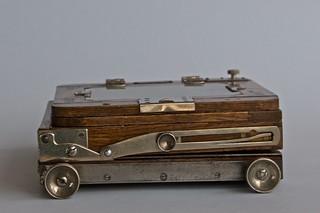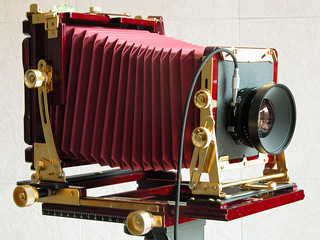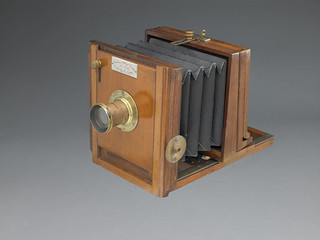A field camera is a view camera, particularly one which is light and compact for easy use away from the studio. The camera is usually folding. The most common designs have a folding bed at the front, with the lens standard racking forward on the bed for focusing. This arrangement, like the Boots and Tachihara cameras shown here, is sometimes called the 'English pattern' (particularly by English sources)[1] The standard will have some camera movements (rise and fall, shift, tilt and swing), but the degree of these is likely to be sacrificed somewhat to achieve this portability, when compared to a studio camera, and some of the less-used movements may not be offered at all. The body of the camera may allow some movements at the back too. Here there is a ground-glass focusing screen and the means to attach dark-slides and perhaps roll film backs. The front and rear of the camera are connected by a bellows in almost all designs. This excludes light while allowing the flexibility required for focusing and camera movements.
This layout is not inevitable, and especially earlier field cameras may be seen in other designs such as the tailboard camera shown here, where the folding bed is at the rear, and focusing is achieved by moving the rear standard.
Field cameras are still made today, and some bear a strong resemblance to cameras made more than a century ago. However, modern manufacturing and in some cases the use of new materials (such as polymers, carbon fibre and titanium) have allowed improvements in lightness, strength and extreme camera movements.
Notes
- ↑ For example, Wood and Brass is divided into 'tailboard', 'English-style', and 'other' cameras.



